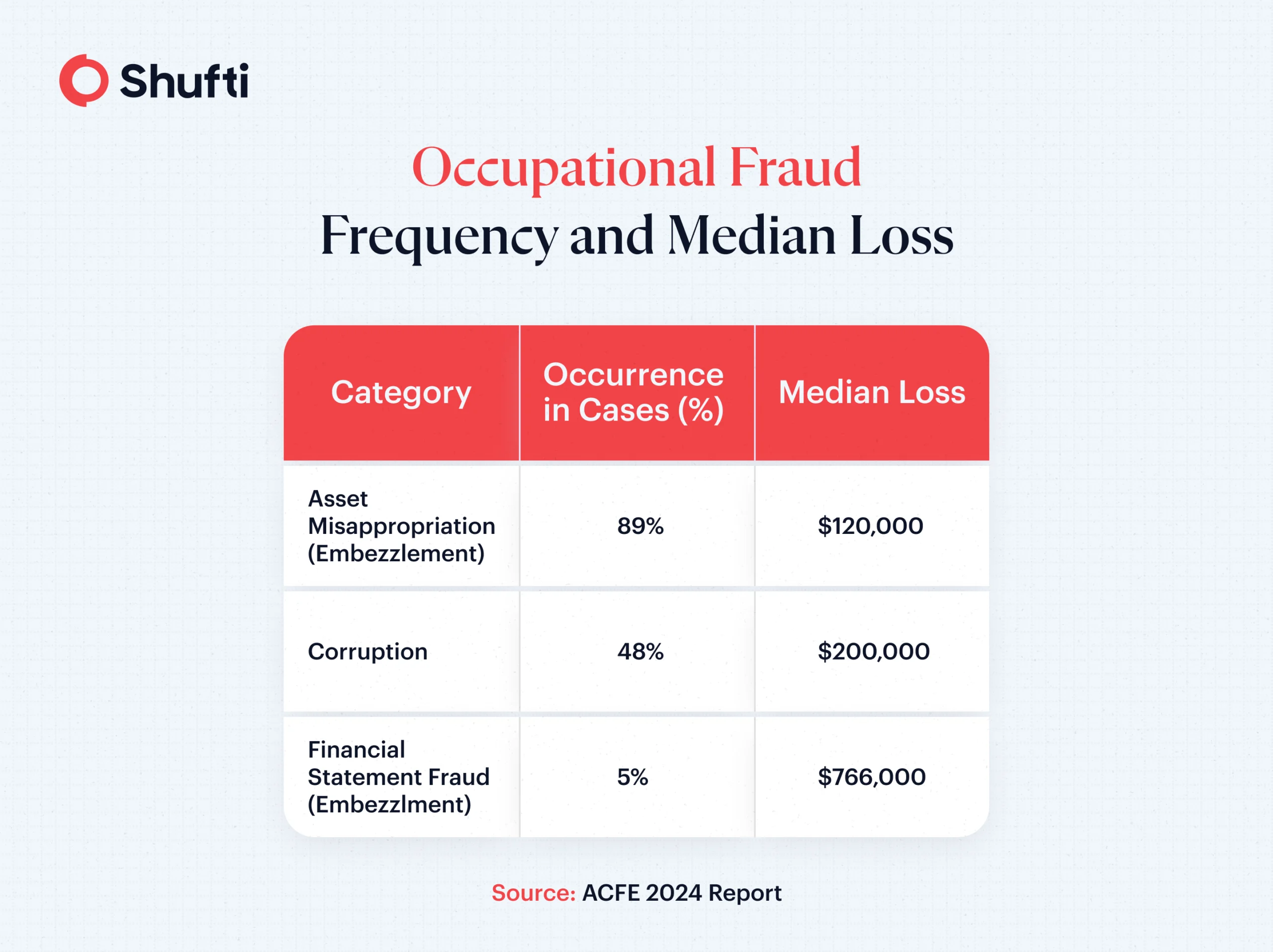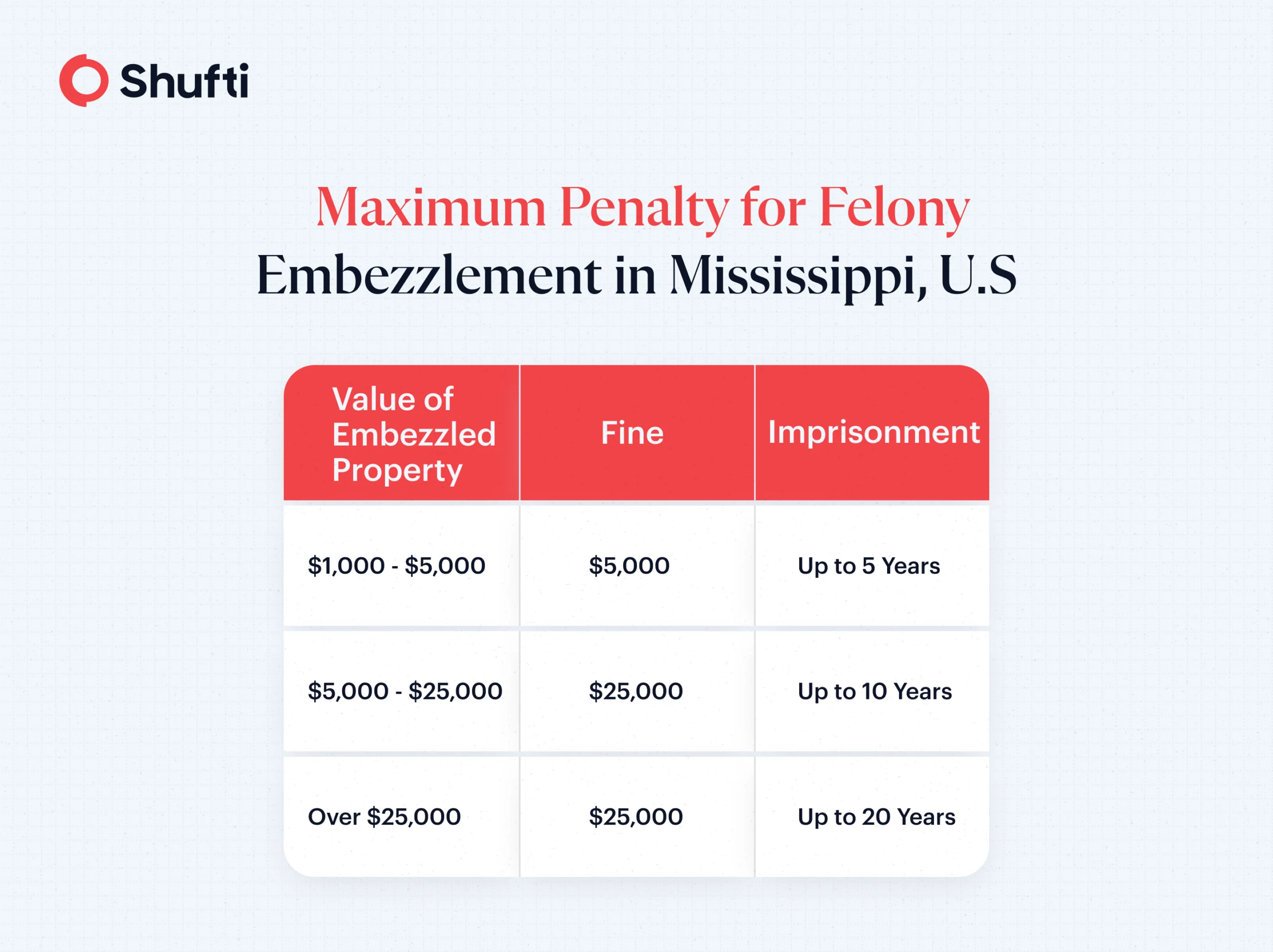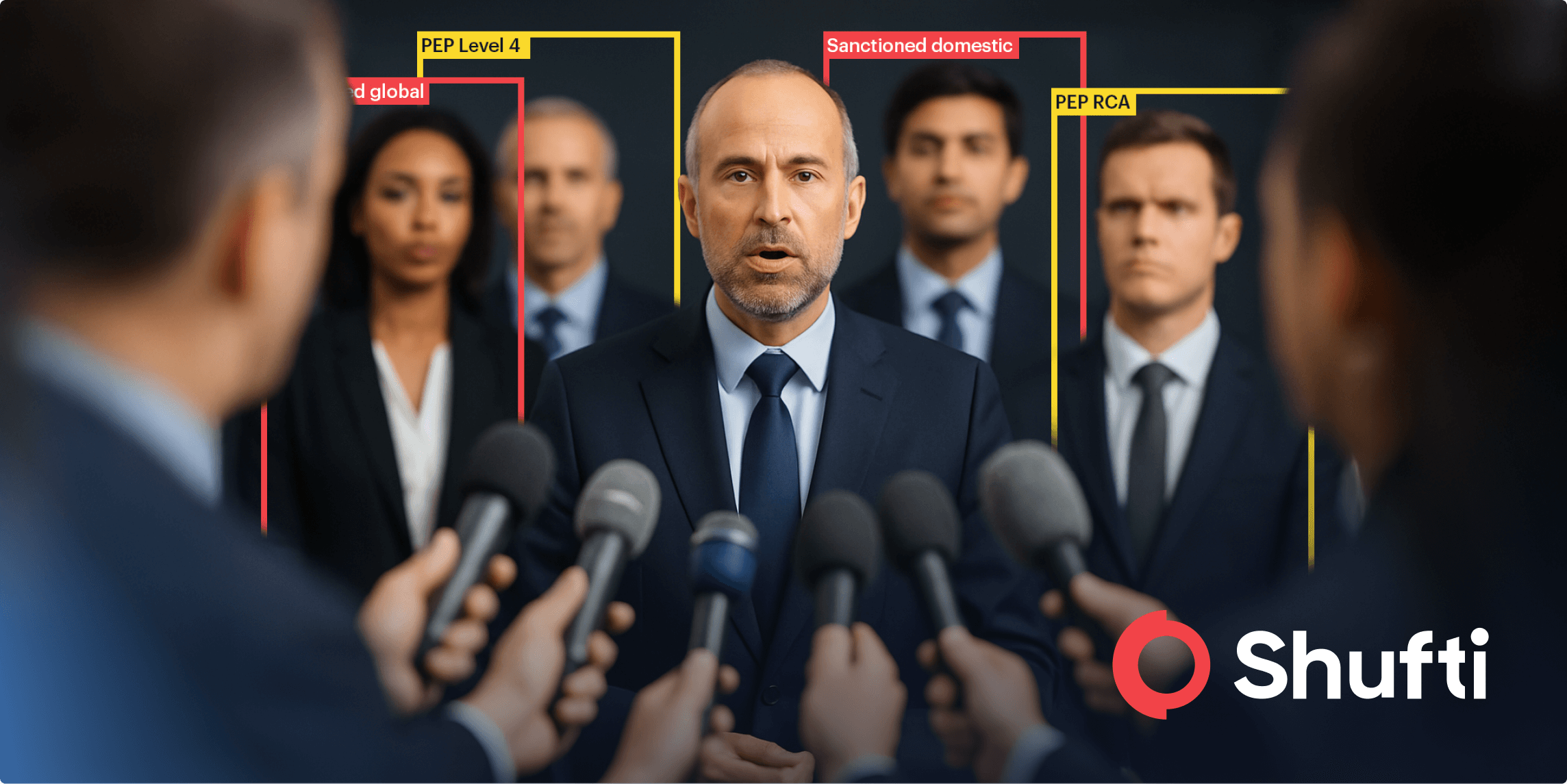What is Embezzlement and How to Protect Your Business against It

Picture a trusted gardener slowly taking flowers from your private garden to plant in his home. You may not notice it at first, but the consistent misuse of your private property will make your losses add up over time. That is how embezzlement works. It refers to a trusted individual misusing the property/funds of someone else for their own personal gain.
Embezzlement is one of the most common forms of financial fraud, yet it often goes unnoticed until it’s too late. Typically, embezzlement is associated with trusted employees or executives misappropriating company funds for personal use. According to the Association of Certified Fraud Examiners, organizations lost around 5% their annual revenue to fraudulent activities in 2024, with embezzlement by employees ranking as one of the top contributors.
Understanding how embezzlement works, its types, and early warning signs can help businesses protect themselves before any such attempt can succeed.
What Is Embezzlement?
What does Embezzlement mean? Embezzlement refers to the misappropriation of funds for personal use. For example, when an employee is legally entrusted with company assets (such as funds or property), they misuse the assets to gain personal wealth and benefits at the company’s expense.
Unlike theft, which is usually obvious, embezzlement is more deceptive since it involves tricking the system, which may include falsifying records, creating fake invoices, or transferring funds without proper authorization. Additionally, the embezzled property is lawfully in the possession of the employee until he misappropriates it, unlike theft, where the thief was never in lawful possession of the property/funds.

What are the Common Types of Embezzlement:
Although embezzlement is most commonly associated with employee/company fraud, it can occur in a number of ways and is not restricted to this one specific example. For this reason, it is crucial for businesses to understand the different types of fraud and take precautionary measures in time. Some examples include:
-
Payroll Embezzlement Fraud:
Senior employees in a company may manipulate payroll to create ghost employees or issue extra paychecks to themselves.
-
Expense Reimbursement Fraud:
Individuals may submit fraudulent receipts or claim inflated expenses as reimbursement from a company, such as claiming personal meals as business expenses.
-
Check Embezzlement Fraud:
The altering or forging of company checks to transfer funds into personal accounts.
-
Inventory Theft:
Where the employees may misappropriate physical company assets such as merchandise or equipment to sell or cash, or utilize the assets for their own gain,
-
Financial Statement Fraud:
Similar to payroll fraud, senior employees may fraudulently present the company’s financial reports to conceal stolen funds while keeping investors in the dark.
Is Embezzlement a Crime?
In most legal systems worldwide, embezzlement is classified as a felony crime, carrying severe penalties. Since the employer placed specific trust in the employee to utilize the funds/property in the best interest of the company, embezzling said funds/property and causing direct financial harm to the company is a serious breach of trust and requires strict penalties. That is why embezzlement is considered a serious criminal offense:
-
United States of America:
In the U.S, embezzlement is usually charged under state laws, and the severity of the punishments depends on the value of the embezzled property. For instance, under state law:
- Misdeamnor (less serious than a felony) – If the value of the embezzled property is less than $1,000, then most U.S states consider it a misdemeanor and impose a minor fine/ and or imprisonment.
- Felony (serious crime) – If the value of the embezzled property is greater than $1,000, then the embezzlement becomes a felony and carries with it severe financial penalties and imprisonment

Federal embezzlement charges impose even harsher penalties when the property embezzled is federal. A misdemeanor charge carries fines of $100,000 and a minimum prison sentence of six months, while a felony charge carries a $250,000 fine and up to 30 years imprisonment.
-
United Kingdom:
In the UK, embezzlement is generally prosecuted under the Fraud Act 2006, which defines fraud as false representation, failing to disclose information, and abuse of position. Depending on the severity of the case at hand, this statute imposes between 5 and 10 years of imprisonment for embezzlement.
Additionally, the Theft Act 1968 allows embezzlement to be prosecuted as theft, allowing grieved parties another remedy to punish embezzlers.
However, the legal consequences of embezzlement go beyond imprisonment and fines. Civil lawsuits, damaged reputations, and blacklisting are common measures taken in such cases, which highlight the extent of consequences for this crime.
How the Enron Scandal Exposes the Consequences of Embezzlement?
The Enron Scandal was a high-profile example of corporate embezzlement in the early 2000s. Enron, which was one of the largest energy and commodities companies in the world, was caught manipulating its financial statements to hide massive debts and inflate profits. This was done to conceal the losses the company was facing so that the investors, auditors, and the public would not be aware of them.
After Enron’s secret was out, the company declared bankruptcy and lost around $63 billion in shareholder value, with thousands of employees losing their jobs and savings.
This scandal accurately illustrates the real-world consequences of embezzlement. It serves as an example of how embezzlement not only harms a company’s financial stability but also affects every individual associated with that company and sometimes even the entire industry.
Did You Know?
The Enron scandal led to major reforms in corporate governance and accounting standards, ultimately leading to the Sarbanes-Oxley Act to improve transparency in financial reporting.
What Are Some Early Signs of Embezzlement:
Given the severe real-world consequences of embezzlement and the severity of legal consequences discussed above, it is important for businesses to spot any embezzlement attempts early to prevent substantial losses. Here are some signs to look out for:
- Unexplained financial discrepancies: Missing funds or unusual transactions.
- Sudden lifestyle changes: Employees suddenly start spending beyond their salary.
- Avoiding time off: Sometimes. Employees may stay present to avoid discovery.
- Incomplete or altered records: The company’s financial books show missing receipts and inconsistent bookkeeping.
Regular monitoring and audits make it easier to identify and address potential issues before they escalate.
How can embezzlement be prevented?
Embezzlement can seriously damage a business financially and reputationally. Understanding embezzlement, its various types, legal implications, and warning signs and preventative measures helps companies to stay protected. Here are some techniques you can use to prevent embezzlement in your business:
- Ensure that no single employee handles multiple financial processes (such as financial reports and payroll)
- Frequently conduct audits both internally and externally to discover any discrepancies early on.
- Have clear policies and training programs for employees so they fully understand company rules and the consequences of embezzlement.
- Integrate automated identity verification and monitoring solutions to flag unusual activity to timely detect fraudulent activities.
If you want to reduce the risk of embezzlement and safeguard your company’s assets from fraud, implementing an industry-leading AML screening system is a key step. Shufti provides businesses with cutting-edge AML screening technology that helps identify and prevent fraudulent activity, including embezzlement. By screening employees, partners, and vendors against global sanctions lists, Politically Exposed Persons databases, and adverse media sources, AML screening can reveal red flags that may indicate potential internal fraud or illicit financial activity.
Protect your business from internal fraud and embezzlement with comprehensive AML screening. By identifying high-risk individuals early, you can mitigate the threat before it escalates.
Take control of your business security now. Request a demo and discover how Shufti can help you stay one step ahead of potential threats.
Frequently Asked Questions
What does embezzlement mean?
When someone is entrusted with money or property and then uses it for their own benefit, this is known as embezzlement.
Is embezzlement a felony?
Yes, embezzlement is generally charged as a felony, especially when the amount stolen is significant or the crime involves public funds or special trust.
What is embezzlement of property?
This includes taking any property, such as tools, inventory, or private data, that was entrusted to someone else to care for and benefiting from it yourself.










